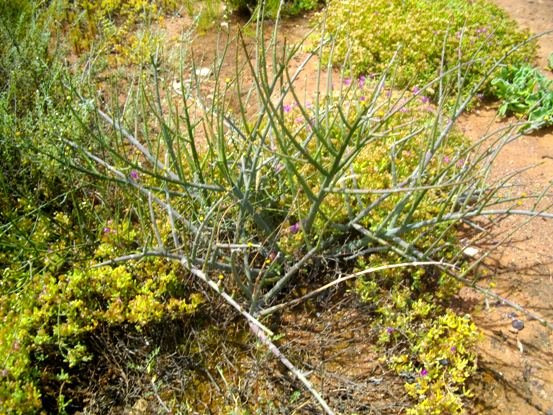Euphorbia arceuthobioides

Euphorbia arceuthobioides deserves its Afrikaans common name of ystervarkmelkbos (porcupine milkbush) on looks alone; the shape resembling porcupine spines, the milk-resembling sap appearing wherever a stem is damaged. The name of this succulent shrub was probably earned, however, for the tuberous rootstock that is listed on the porcupines’ menu of delicatessen. And porcupine quills don’t branch!
The plant is also known as the steenbokmelkbos (steenbok milkbush), but this common name is shared with E. burmannii and it is not known whether the steenbok feeds on the plant.
The species is endemic to the Western Cape, growing in parts of the Little Karoo, from the Langeberg and northwards into the Karoo. Some records state that this species occurs more widely, from Namibia to KwaZulu-Natal. This plant was photographed on the Rooiberg south of Calitzdorp in October when there clearly had been good rains. Van Jaarsveld, et al, state that this species grows in the Cape Peninsula (2006). They even report it to be found on Table Mountain (Vlok and Schutte-Vlok, 2010; iSpot; Bond and Goldblatt, 1984; JSTOR; www.redlist.sanbi.org).

